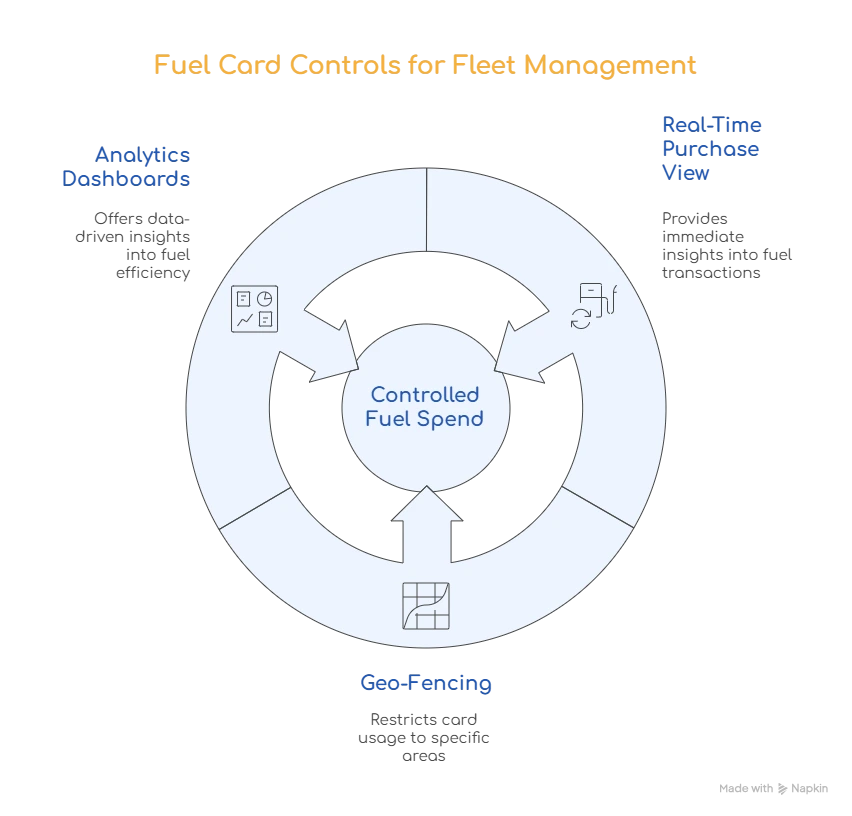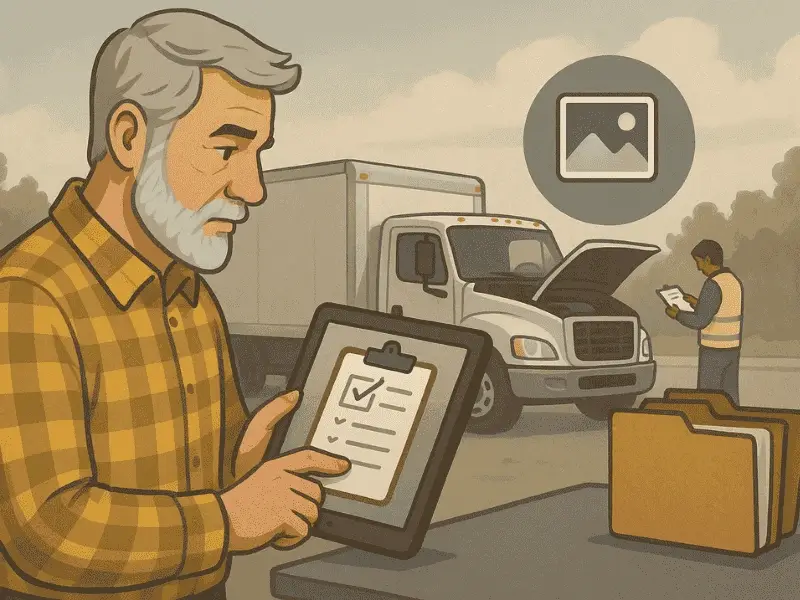Key Takeaways
- Fuel fraud can drain up to 10% of a fleet’s total fuel spend.
- Linking cards to GPS and driver data prevents misuse.
- Real-time alerts flag out-of-zone or over-limit refuels.
- Weekly audit logs and KPIs ensure continuous accountability.
- Simply Fleet automates fuel card controls, analytics, and reports.
Fuel is one of the biggest operational costs for any fleet and one of the most vulnerable to misuse.
Research shows that fuel theft and card abuse can increase operational costs by 8–12% annually, especially for fleets with multiple drivers and vehicles operating across sites.
Managers in construction, HVAC, field service, and car rental industries often face three recurring problems:
- Unverified card use: refuelling outside approved routes or hours.
- Data gaps: missing receipts or unlinked transactions.
- Audit failures: incomplete logs or untracked fuel variance.
A weak policy means drivers can unintentionally (or deliberately) bypass controls, refueling personal vehicles, splitting transactions, or buying extra fuel to resell.
The key to control lies in a strong policy backed by data, alerts, and telematics.
Why Fuel Card Controls Matter for Fleet Teams

Fleet Managers
Get a real-time view of every fuel purchase and automatically match it with route data. No more manual reconciliations or chasing receipts.
→ Detect abnormal refills, off-route stations, or high-volume purchases instantly.
Dispatchers
Use geo-fencing to restrict card usage to specific fuel stations or service areas.
→ Every transaction outside that area triggers an alert, protecting against card misuse.
Operations Managers
Access analytics dashboards showing cost per mile (CPM), fuel economy (MPG), idle time, and fuel variance.
→ Use these insights to reduce total cost of ownership (TCO) and plan efficient refuelling schedules.
When all three roles align under a clear policy, fuel spend turns into a controlled, auditable, and predictable process.
How to Build a Fuel Card Policy That Prevents Fraud
A well-structured fuel card policy should define who can use each card, where, when, and for what amount.
Here’s how to design and implement one step by step.
Step-by-Step SOP
- Map cards to specific vehicles and drivers.
- Define limits for transaction value, litres, and station access.
- Enable alerts for location, fuel type, and time-based violations.
- Integrate telematics to validate each refuel against GPS data.
- Audit weekly to reconcile spend vs. mileage.
- Update monthly based on trends and variance reports.
This layered control framework ensures both prevention (via limits) and detection (via analytics).
Key Fuel KPIs Every Manager Should Track
These KPIs indicate not just fraud but also inefficiency like poor driving habits or faulty engines.
Tracking them in a dashboard helps spot trends before they become expensive problems.
Download FREE Fuel Tracking Checklist
Templates: Policy Format & Weekly Audit Log
Sample Fuel Card Policy Summary
- Objective: To manage and monitor fuel expenses transparently.
- Scope: Applicable to all company-owned and leased vehicles.
- Authorized Use: Only for company vehicles; personal use prohibited.
- Limits: Transaction caps, station restrictions, and fuel type locks.
- Driver Duties: Maintain receipts, record odometer readings, and report lost cards.
- Monitoring: Daily sync with GPS and route data.
- Misuse Consequences: Investigation, recovery, or disciplinary action.
Weekly Audit Log (CSV Example)
These logs form the backbone of your weekly compliance audits, ensuring transparency across all refuelling events.
How Simply Fleet Automates Fraud Control
Manual monitoring of hundreds of fuel transactions is nearly impossible but Simply Fleet simplifies it through automation.
- Smart Linking: Each card is mapped to a driver and vehicle, ensuring no overlap.
- GPS & Telematics Integration: Each transaction is matched to actual route and odometer data.
- Fraud Alerts: Instant notifications for duplicate swipes, out-of-zone use, or suspicious patterns.
- Analytics Dashboard: Visual KPIs for CPM, MPG, and idle time displayed in one place.
- Automated Reports: Download weekly audit logs and monthly summaries for management review.
For more on improving card-linked monitoring, explore how fleets achieve automated expense tracking through fleet fuel management and how mobile integration helps streamline fleet operations.
Next Steps: From Policy to Practice
To make your fuel card policy truly effective:
- Train drivers on usage protocols and fraud indicators.
- Enable real-time alerts from day one of rollout.
- Run weekly audits using Simply Fleet’s automated logs.
- Adjust policy thresholds quarterly based on performance data.
- Celebrate compliance to build a responsible fleet culture.
A structured approach like this can reduce fuel misuse by up to 30% within the first quarter.
Take full control of your fleet’s fuel expenses with Simply Fleet. Start your free trial with Simply Fleet and simplify your fuel management today.
Related Post
School Bus Fleet Maintenance: Safe and Efficient Operations
20 Things to check while performing a Vehicle Inspection



.png)








.png)


.png)

.webp)


.webp)
.png)



